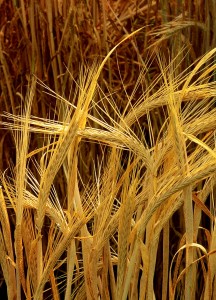Oats, Barley, Buckwheat
Wholegrain goodness should be a part of every healthy diet.
Current USDA recommendations are three servings of whole grains each day, but Americans typically consume an average of only one serving. Eating these fiber rich whole grains can help to reduce the risk of many chronic diseases and play an important part in weight management.
We’ve all heard that oats can help reduce the risk of coronary heart disease, but their health benefits don’t end there. Oats can reduce the risk of type II diabetes, lower blood sugar, and blood cholesterol levels. They’re also high in fiber and protein and contain an abundance of phytonutrients.
Barley may be one of the oldest grains on earth, but despite its long history it never gained the popularity of wheat and oats in the United States. As the health benefits of barley continue to emerge, consumption of this grain will surely rise as well. Barley is rich in phytochemicals, fiber and minerals and provides stabilization of blood glucose as well as prevention against cardiovascular disease and cancer.

Buckwheat is unsurpassed in its ability to lower blood cholesterol. It also reduces and stabilizes blood sugar levels following meals, which is a key factor in preventing diabetes and obesity. Buckwheat has more protein than rice, wheat, millet, or corn and is high in essential amino acids, yet contains no gluten. Hulled buckwheat kernels are called groats, and once roasted they are known as kasha. Kasha has long been a staple food in Eastern Europe and has a delicious nutty flavor.
Related Posts
-
 Fiber for Faster Weight Loss
No Comments | Jun 27, 2010
Fiber for Faster Weight Loss
No Comments | Jun 27, 2010 -
 Weight Loss Tea
No Comments | Aug 23, 2010
Weight Loss Tea
No Comments | Aug 23, 2010 -
 Salmon, Fish and Omega-3s
No Comments | Jun 26, 2010
Salmon, Fish and Omega-3s
No Comments | Jun 26, 2010 -
 Acai Berry
No Comments | Jun 26, 2010
Acai Berry
No Comments | Jun 26, 2010
